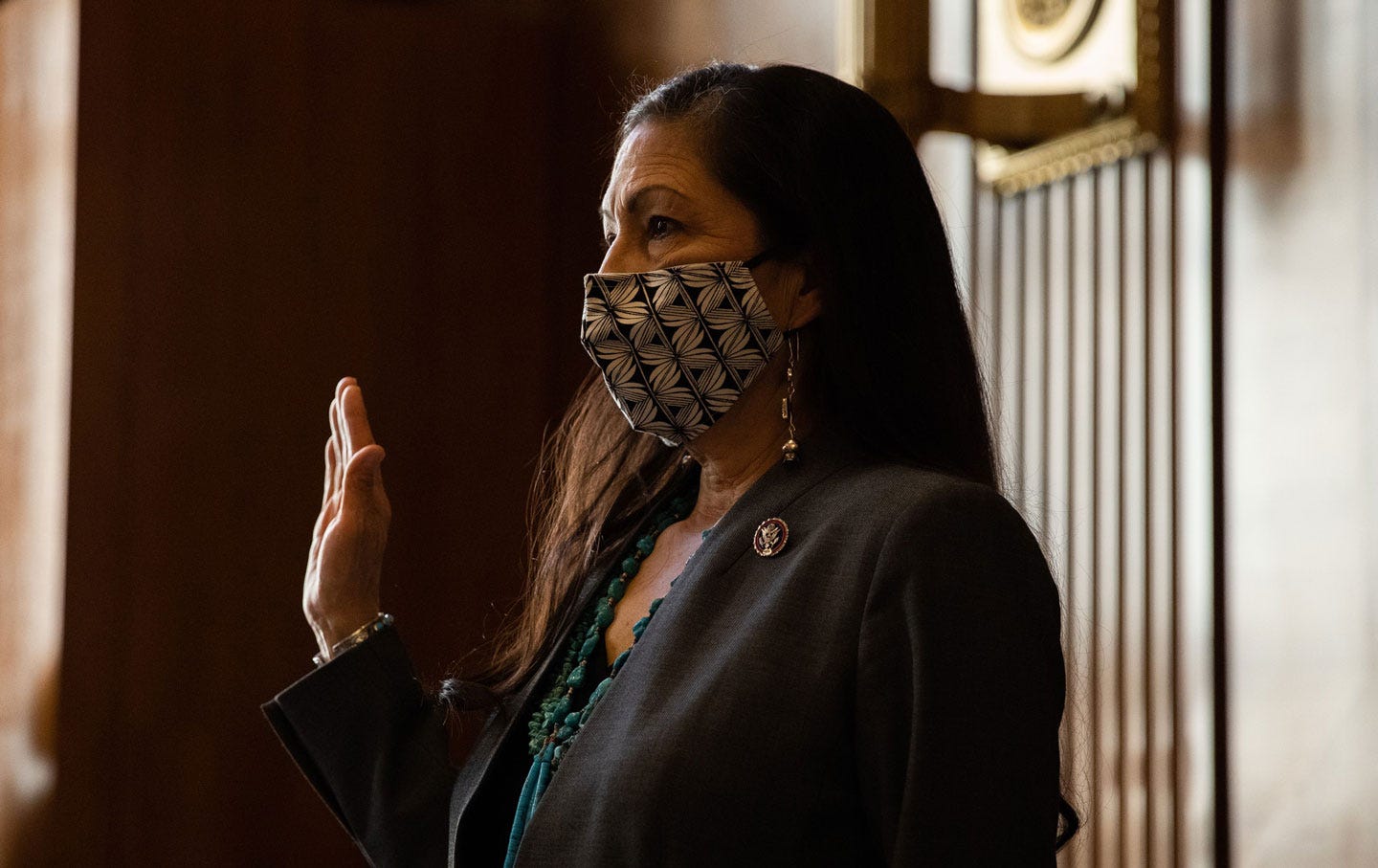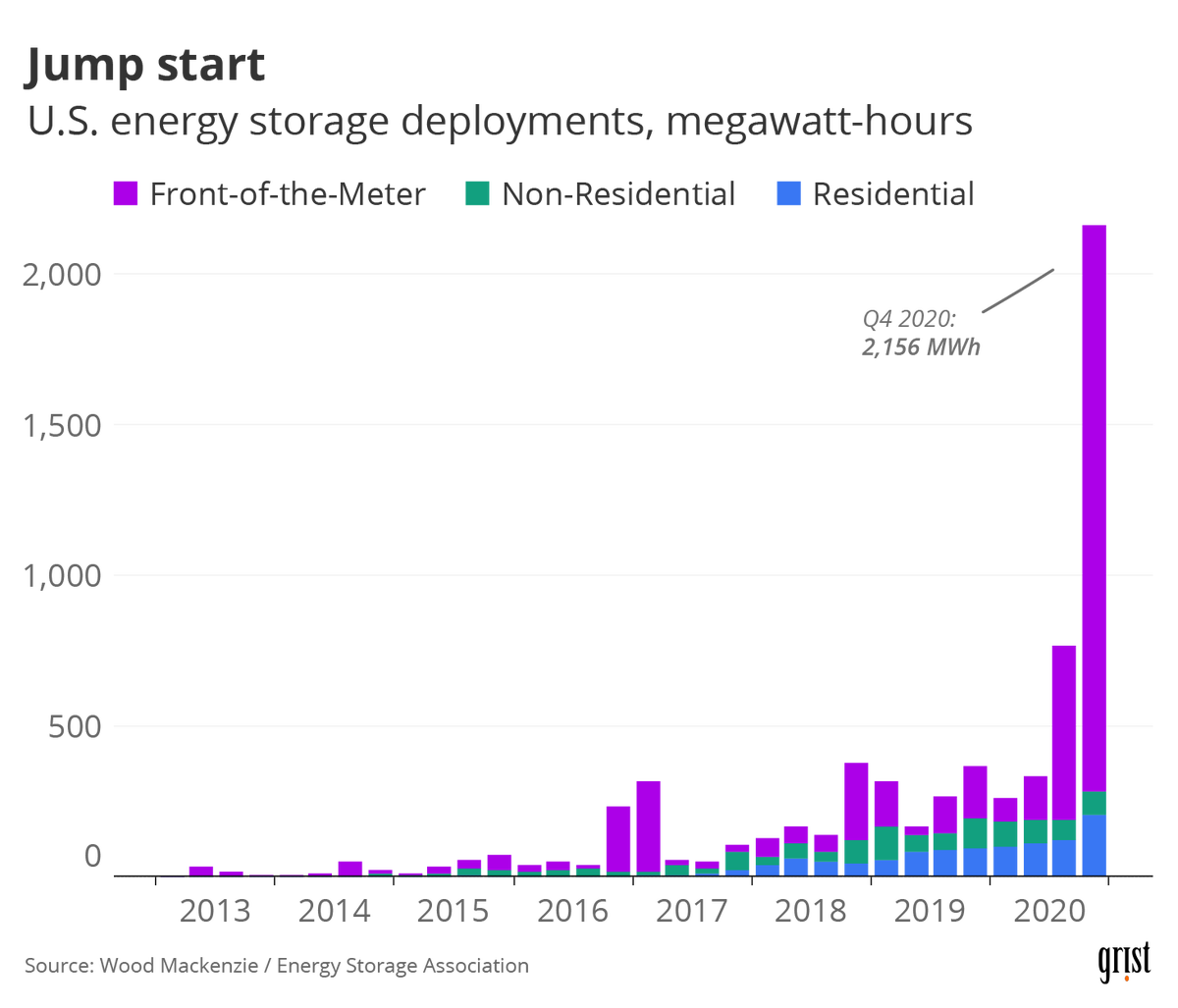🌏📰 Climate Daily Digest — Mar 7, 2021
A snackable text version of the Climate Headlines Clubhouse Club
Happy Sunday! As mentioned in my last Substack, I recently started a Clubhouse ‘Club’ called Climate Headlines to share climate news, updates and questions. I don’t think I can link to the club, so I’m just including a picture of it here in case you want to find it and join us:
Otherwise, this is our email summary for the week for your linking and bookmarking pleasure.
🙏🏽 SPECIAL FAVOR
I’m always looking for ideas for how to better structure these, so please share your comments on this post, or via Twitter @susanfsu.
Finally, if you have a headline in mind that’s looking for an outlet, join our Club! Otherwise see you at next Digest 👋🏽
🌏 CLIMATE SCIENCE
1. Seagrass loss in the UK
A new study by the investigative and research journalism outlet The Conversation found that as much as 92% of the UK’s seagrass has been lost due to pollution and damage from boating.
What’s seagrass?
Seagrass is a flowering plant that forms rippling underwater meadows in shallow coastal seas. It forms habitat for fish, shellfish, and acts as a hyper effective filtration system for water.
Why it matters
Seagrass meadows are one of the world’s most efficient sinks of carbon and support 20% of the world’s largest fisheries. As seagrass gets destroyed, much of that carbon gets released into the atmosphere as a greenhouse gas.
The Conversation’s original research estimates that seagrass meadows in the UK alone once stored 11.5 million tonnes of carbon, which equals the annual emissions of 7.7 million cars. For scale: 115 million cars are driven in the US each day.
Seagrass meadows were also estimated to have sheltered 400 million fish, and filtered pollution equivalent to the amount of urine produced by the entire population of Liverpool each year.
The good news
There have been successful seagrass restoration efforts, most notably off the coast of Virginia where over 70 million seeds of a particular type of seagrass have been tossed into the coastal ecosystems, resulting in the recovery of 3612 hectares of ‘productive’ seagrass meadows. A research study published in Science Advances found that:
“Well-developed meadows now foster productive and diverse animal communities, sequester substantial stocks of carbon and nitrogen, and have prompted a parallel restoration for bay scallops.”
Virginia’s not the only success story either. Restoration efforts have gone well in Tampa Bay, San Francisco Bay and Chesapeake Bay, and act on a 1 to 2 decade time scale.
Given the climatic and ecological costs to seagrass degradation, and the benefits of restoration, this seems like relatively simple, cost-effective multi-solver that we should be looking out for and supporting where we can.
Dive deeper
Seagrass meadows shrank by 92% in UK waters - restoring them could absorb carbon emissions and boost fish — The Conversation
Restoration of seagrass habitat leads to rapid recovery of coastal ecosystem services — Science Advances
2. We don’t talk enough about wildfire smoke
Despite the fact that ‘smoke’ now has its own emoji on the Apple keyboard, we don’t talk nearly enough about the harmful health effects of air pollution caused by wildfire smoke.
In a new study published in Nature, researchers found that wildfire smoke led to 10X the number of hospitalizations due to respiratory illness as compared to other types of pollution, including air pollution from traffic and vehicle emissions.
That’s because these wildfires aren’t just burning the woods. Due to development close to wilderness regions, fires are increasingly burning through our built environment — meaning their resulting smoke contains toxic mix of plastics, metals, household cleaning chemicals and other unnatural char. Megafires – the really big ones that generate their own wind and microclimate – also pump smoke higher up, where it often lingers for long periods of time, oxidizing and becoming even more toxic.
Why it matters
In addition to asthma and other respiratory diseases, wildfire smoke also triggers heart attacks and strokes at higher rates.
Air pollution can even affect mental performance, by dampening working memory and brain development in children.
Wildfires are terrifying, tragic and bad for our brains and for the planet. It’s not just a matter of ‘forest management’ though. We need to look critically at the systemic factors pushing development deeper into the urban-wild-interface, and how it all interacts with a warmer and dryer climate — factors including housing density and price, which are usually controlled at the municipal or regional level.
In the Dive Deeper section below, I’ve included a couple of good reads looking at how housing NIMBYism drives climate change, and I encourage you to join tonight’s Clubhouse to share some thoughts on this!
Dive Deeper
California’s wildfire smoke could be more harmful than vehicle emissions, study says — The Guardian
California is plagued by two major issues: wildfires and a lack of affordable housing. Each problem exacerbates the other. — The Atlantic
The California Dream Turns Into a Nightmare. Catastrophic fires call for rethinking suburban NIMBYism. — Bloomberg
Air Pollution May Damage People’s Brains — The Scientist
🌏 CLIMATE POLICY & POLITICS
3. Deb Haaland heads for confirmation
Despite heavy pressure from oil-and-gas backed Republicans like John Barrasso from Wyoming (recipient of $1.2M in contributions from the oil & gas industry) and Steve Daines from Montana (recipient of $288K from the oil & gas industry), Deb Haaland is headed for confirmation as Secretary of the Interior.
Why it matters
The oil & gas industry has 500,000 acres of federal public lands leases that they haven’t yet developed, and a stockpile of 5,000 approved-but-unused permits for drilling on federal public lands.
If confirmed, Deb Haaland would be in charge of all 500 million acres of US public land, and has voiced opposition to extractive drilling on those lands. In fact, she even joined in public protest of the Dakota pipeline development, and has said she supports the Green New Deal.
Her move towards the confirmation step hinged on support from Republican Senator Susan Collins of Maine and Republican Senator Lisa Murkowski of Alaska, who sit on the Senate Energy and Natural Resources Committee that held a pre-vote necessary to move to confirmation.
Interestingly, although Murkowski expressed hesitation over Haaland’s views on drilling, she ultimately threw her support behind Haaland because of Haaland’s “historic nomination” as the first Native American person in US history to be part of a presidential cabinet. Note that Native Americans make up 18% of Alaska’s population.
Dive Deeper
Reversing Trump, Interior Department Moves Swiftly on Climate Change — The New York Times
How Deb Haaland's confirmation bid became a 'proxy fight' over fossil fuels — The Guardian
Haaland, With a Key Vote in Her Column, Appears Headed for Confirmation — The New York Times
4. We’re way off track to hit our climate pledge targets
And by ‘we,’ I mean the world.
China builds its way out of the pandemic
Earlier this week, we talked about China’s greenhouse gas emissions increase in Q4 2020:
Emissions were 4% higher that quarter than in Q4 2019, even though they were projected to drop from 2019 numbers.
This is largely because China has focused its economic recovery on large scale, carbon-intensive infrastructure projects, involving lots of concrete, cement and steel production, rather than focusing on direct cash relief to consumers and businesses.
In some ways, using the pandemic as an opportunity to rebuild infrastructure isn’t a bad thing, but it all depends on how clean and future-forward the methods are.
On Friday, China announced their 5-year plan that was fairly lackluster from a climate perspective, but Climate Headlines (our Clubhouse thing) member Thomas Lee suggested that this could be due to them wanting to anchor global expectations lower now, in order to tee up a bigger splash at the UN Climate Summit coming up in November 2021.
We are all a ‘China’
New climate targets submitted to the UN indicate that countries around the world would reduce emissions by less than 1% — as compared with the 45% that’s needed by 2050 to stay in accordance with the Paris Agreement goals. The 45% reduction is what’s needed to stay below 2°C of warming, which itself is still a LOT.
What’s worse, fewer than half of all countries submitted new goals at all, even as climate change starts to rear its ugly head in places where humans actually live, and even as warming feedback loops in the Arctic and Antarctic continue to accelerate.
Let’s name names, shall we?
The United States didn’t submit anything, because we just rejoined the accord and will likely make our announcements on April 22 at the international climate summit that the White House is hosting;
China is also not part of this tally. It will likely make a bigger announcement on or around the US’ international climate summit date to compete for limelight with the US;
Australia, Brazil and Russia — high among the world’s biggest emitters — submitted new plans for 2030 without increasing their ambitions;
Mexico lowered its climate targets. The Natural Resources Defense Council said, “Mexico is effectively retreating from its previous leadership on climate and clean energy.”
36 other countries actually raised their climate targets… those include Britain, Chile, Kenya, Nepal and the 27 countries of the European Union.
In case you thought global leaders had it all together and could be trusted to take care of this… think again.
For my techno-optimist readers and friends who believe that humans must be brilliant enough to engineer a solution, and that we couldn’t possibly allow this to happen, these numbers should serve as a reality check.
The only way human ingenuity is going to lift us out of the climate quagmire is if you, dear ingenious reader, get involved.
Dive Deeper
Global Action Is ‘Very Far’ From What’s Needed to Avert Climate Chaos — The New York Times
This graphic explains why 2 degrees of global warming will be way worse than 1.5 — Vox
🌏 CLIMATE COMMS
5. Gas companies are gaslighting us
And using Instagram influencers to do it.
The American Gas Association has spent hundreds of thousands of dollars lobbying in Austin and San Antonio to prevent electrification standards from being passed at the city level.
Despite what you may think of your gas stove, burning gas indoors is actually bad for you — it exposes people to dangerous pollutants that are linked with heart attacks, respiratory disease and asthma. One study found that children in homes with gas stoves were 42% more likely to have asthma than children in homes with electric stoves.
Why it matters
Gas stoves in particular expose tens of millions of people in the United States to levels of pollution so high that they would be considered illegal outdoors.
Every time you ignite a gas stove, you’re filling your home with carbon monoxide, nitrogen oxides, particulate matter, and formaldehyde, similar to what is coming out of a dirty tailpipe. If you live in a small apartment, the effects are even worse because they’re more concentrated.
Natural gas used for buildings causes about 12% of US climate pollution, and that’s not counting all of the emissions generated from the process of extracting and transporting gas.
The Union of Concerned Scientists reminds us that,
“The drilling and extraction of natural gas from wells and its transportation in pipelines results in the leakage of methane, primary component of natural gas that is 34 times stronger than CO2 at trapping heat over a 100-year period and 86 times stronger over 20 years.”
Influence the influencers
The American Public Gas Association has spent a few hundred of thousands of dollars sponsoring micro and nano influencers on pro-gas stove campaigns, promoting the supposed lifestyle and cooking benefits of gas. That veggie breakfast is nothing against a few gigatons of methane.
Dive Deeper
How the Fossil Fuel Industry Convinced Americans to Love Gas Stoves — Mother Jones
The Gas Industry Is Paying Instagram Influencers to Gush Over Gas Stoves — Mother Jones
A Texas city had a bold new climate plan – until a gas company got involved — The Guardian
Environmental Impacts of Natural Gas — Union of Concerned Scientists
🌏 CLIME-ETC
It sounds funny if you say it out loud. This is a collection of extra stories that defy categorization!
Eco-homes become hot property in UK's zero-carbon ‘paradigm shift’ — The Guardian
Low-carbon smart homes are flying off the shelves in the UK, and are actually getting built at a very rapid rate in several new “Climate Innovation Districts” in Sheffield, Leeds and a few other spots.
There are 30,000 of these homes in pipeline to be built! For anyone with any exposure to the building process, that is a remarkable level of volume and velocity.
How are they low-carbon? Well for one thing, they’re efficient and use a “honeycomb” design in the walls that creates insulating air pockets. “The homes are so thermally efficient that 60% of the tenants haven’t had to switch on their heating at all – some for more than 12 years.”
These low energy homes would require about 15 kilowatt hours per square meter per year, as compared to the current average of 54 kilowatt hours per square meter per year — so they’re a substantial energy (and money!) saver.
They’re also cute and modern-looking. Although I personally live on a beautiful, wooded lot that I love, I sometimes crave more connected, communal living — sort of like what my cousins have in their adorable condo complex in China where they can chitchat with neighbors, pop out for a quick visit to the fruit stand that’s dedicated to their complex, or go for a car-free stroll in its tree-shaded walkways. Standard American McMansions are big, but also sad and lonely, by comparison.
One bright side of 2020: A surge in battery storage — Grist
We are deploying way more battery storage capacity, and the graph above says it all.
Batteries cost about 80% less than they did in 2010, which explains the growth.
But the overall market size of energy storage is still tiny, with around 3,500 megawatt-hours deployed in 2020 (equivalent to just 329 American homes’ annual consumption).
Still, it’s growing and on track to 4X in 2021, largely driven by Californians (and now maybe Texans?) who have become increasingly interested in having a backup energy storage system.
If you’re in CA and considering this, know that you can get up to a 25 - 100% rebate from the government to install a battery system. Yes, a 100% rebate in some cases. All you have to do is read and understand this small-font PDF.








